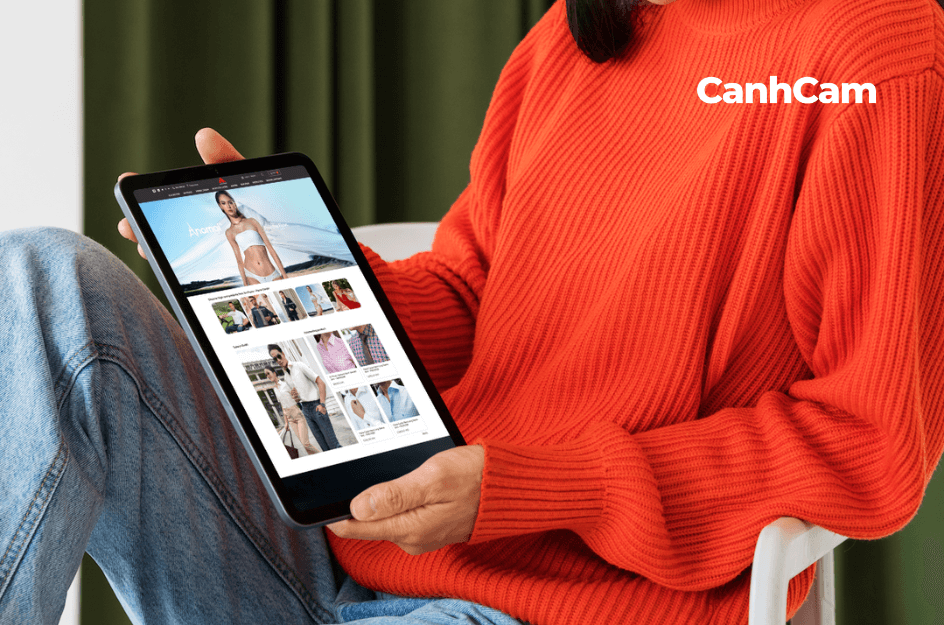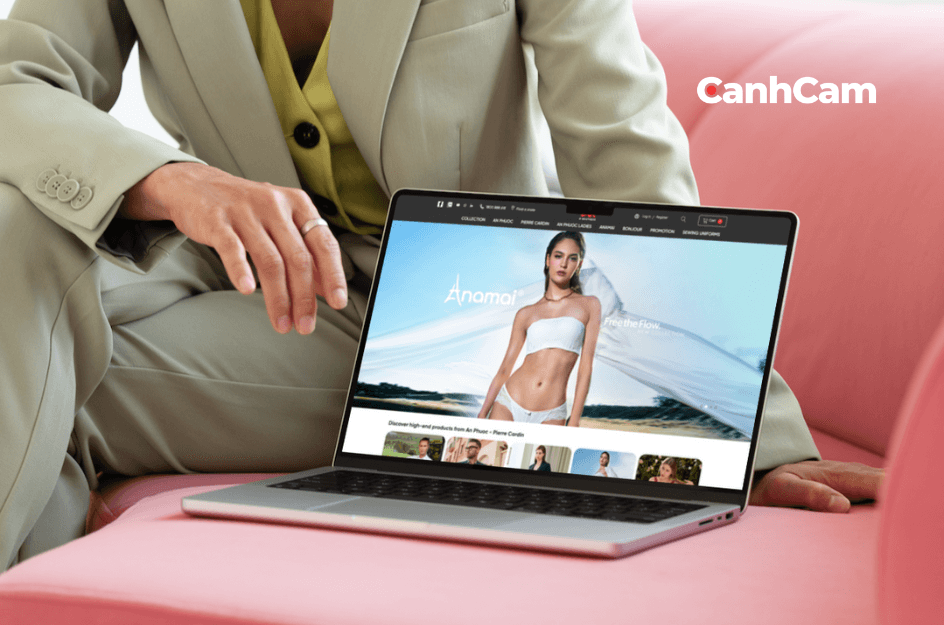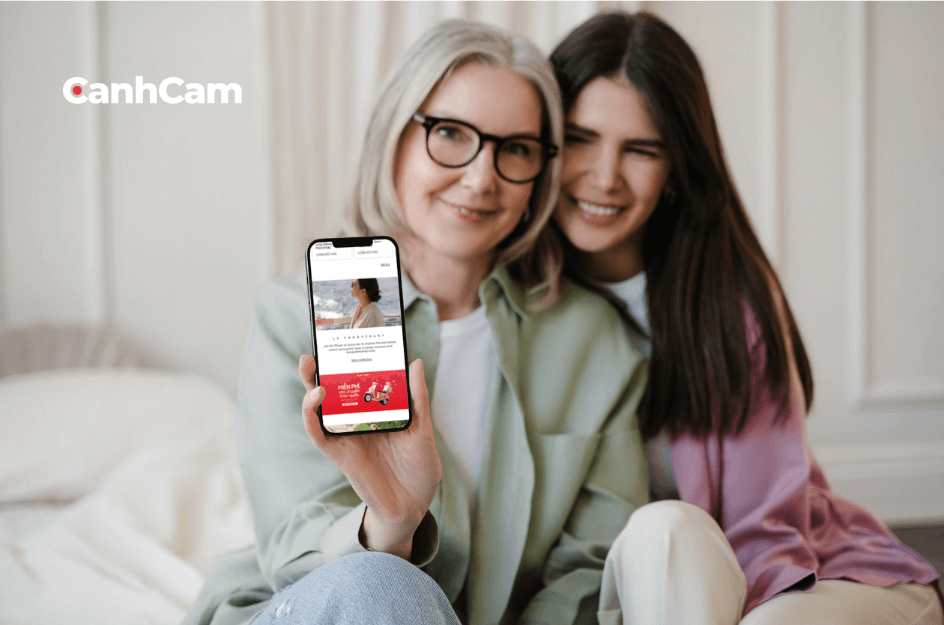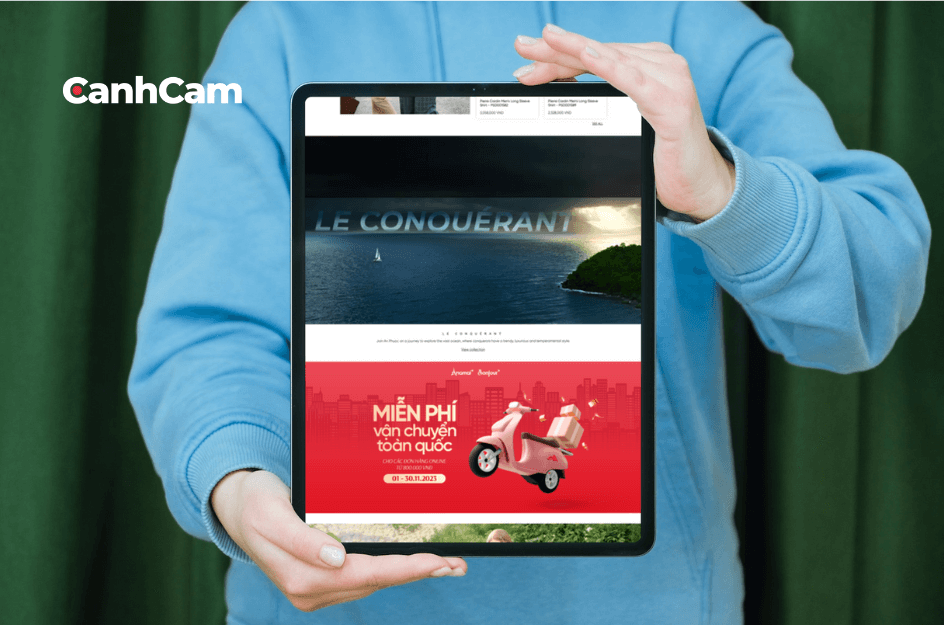To run a successful fashion business, designing a fashion website is essential. Follow CanhCam to learn more about how to design an attractive fashion and apparel website for your business.

What Is the Importance of Fashion Website Design?
To design a professional fashion website, you need to meet the following criteria:
-
Captivate and Convert: Eye-catching visuals and a user-friendly layout are like a storefront window for your fashion brand. They grab attention, create a positive first impression, and build trust with potential customers, ultimately leading to more sales.
-
Reach a Wider Audience: Making your website accessible across popular browsers and devices (phones, tablets, laptops) ensures everyone can discover your brand. This expands your reach and caters to the growing trend of mobile shopping.
-
Seamless User Experience: A website with a logical and clutter-free layout makes it easy for visitors to navigate and find the information they need. Present product descriptions, size charts, and high-quality photos to give users all the details they need to make informed purchasing decisions.
Read more: Beauty Website Design

6 Steps of The Process to Design a Fashion Website
- Define Your Goals: What do you want your fashion website to achieve? Is it to showcase your designs, sell clothing online, or both? Knowing your goals helps shape the website's design and functionality.
- Must-Have Features: List the essential features your website needs. This might include product pages, a shopping cart system for online sales, a secure checkout process, and clear navigation.
- Website Design & Development: Consider your options. You can build the website yourself using website creation platforms, or hire a professional fashion web design agency for a custom solution.
- Reliable Hosting: Your website needs a secure and reliable home. Many web design companies provide hosting services, but you can also choose a separate hosting provider.
- Pick Your Domain Name: This is your website's address on the internet. Choose a name that's memorable, easy to spell, and reflects your brand identity.
- Content & Contact Information: High-quality content is essential. Include captivating product descriptions, captivating visuals, and clear contact information so customers can easily reach you.

Visit our services: local web design Melbourne
Things You Need To Know About Designing a Fashion and Apparel Website
Your fashion website should not only be visually but also provide a smooth and intuitive experience for visitors. Here's what to keep in mind:
Clean Design and Navigation:
- Consistent Look: Maintain a consistent design theme across your website, including colours, fonts, and layouts. This creates a professional and recognizable brand identity.
- Fast Loading: Aim for a page load speed of under 3 seconds. Keep file sizes small, especially for images and videos. Use tools like Google Page Speed Insights to test and optimize your website's performance.
- Clear Labels: Use standard names for sections like "Home," "About," "Products," and "Contact." Avoid confusing or trendy names that might leave users lost.
- Easy Navigation: Link your website pages together logically. Users should easily navigate from product pages to purchase options, size charts, or care instructions. Consider using breadcrumbs, and a navigation that shows users their location within the website structure.
Content Layout and Organization:
- Prioritize Content: Place the most important and engaging information at the top of your website. This could include high-quality product images, your brand story, or current promotions. Less important details like extensive company history or detailed shipping information can follow.
- Visual Appeal: Use high-quality images that showcase your clothing and accessories in their best light. Space content appropriately to create a visually attractive and clutter-free website. Consider using white space strategically to draw attention to key elements.
- Readability: Employ contrasting colours for text and background (like black text on white) for optimal readability. Experiment with different colour combinations to find a palette that reflects your brand identity while ensuring easy reading.
- Font Consistency: Limit the number of fonts used on your website to maintain a clean and professional look. Choose fonts that are easy to read on both desktops and mobile devices.
- Responsive Design: Ensure your website displays well across different web browsers and devices. In today's mobile-first world, your website must adapt seamlessly to smartphones and tablets to provide a positive user experience on any screen size.
Content Display
- Simple Language: Use clear and easy-to-understand language throughout your website. Avoid technical jargon unless necessary on your website. If you do use technical terms related to fabrics or garment care, consider adding brief explanations or tooltips to help users understand their meaning.
- Concise Pages: Break down very long pages into smaller, more manageable sections with clear links between them. This improves readability and prevents users from feeling overwhelmed by large blocks of text.
- Readable Text: Use fonts with a size of 12pt or larger for optimal reading comfort. Consider using larger fonts for important information like product descriptions or pricing.
Engaging Users and Building Trust:
- High-Quality Images: Invest in high-resolution product photos that showcase the details, textures, and functionality of your clothing. Consider using 360-degree product views or zoom functionality to give users a more immersive experience.
- Descriptive Content: Write clear and informative product descriptions that highlight features, benefits, and materials. Include details about sizing and fit to help users make informed purchase decisions.
- Feedback Mechanisms: Create feedback pages or a contact form to encourage interaction with users. This allows them to ask questions, share their experiences, or provide suggestions for improvement.
- Fresh Content: Maintain a "Latest Updates" section to keep users informed about new products, promotions, or news. You can also include blog posts or style guides to provide valuable content and establish yourself as a fashion authority.
- User Input: Include surveys or questions to gather feedback and improve your website based on user experience. This demonstrates that you value customer input and are committed to providing a positive shopping experience.

Professional Fashion Website Design Services at CanhCam
CanhCam offers professional website design services specifically for fashion and clothing brands. Our experienced designers will create a unique and customized website that showcases your brand and products effectively.
We understand the needs of fashion businesses, both large and small - CanhCam offers design packages that can handle a high volume of products and orders. We also integrate management systems to help you manage promotions, orders, and customer relationships (CRM).
Our websites are built with security and stability in mind. Our IT team ensures your website can handle large traffic volumes and keeps your data safe. We also offer regular backups and ongoing support to keep your website running smoothly.
Key benefits of CanhCam's Fashion Website Design:
- Unique and customized website design
- Focus on showcasing your brand and products
- Scalable to handle large product volumes and orders
- Integrated management systems for promotions and orders
- Secure and stable website platform
- Regular backups and ongoing support
Frequently Asked Questions (FAQs)
1. What should a fashion website include?
Fashion is highly visual, so an interactive, visual design and high-quality images are vital to a fashion website's success. They have an immense impact on the way you physically exhibit your online store. Shoppers want to see visuals as close to the items they will receive in their orders as possible.
2. Should I use a template or hire a designer for my fashion website?
Branding through customized design can be achieved rather than with budget-friendly commercial templates that are easy to set up, for clients to meet their image and goals.

